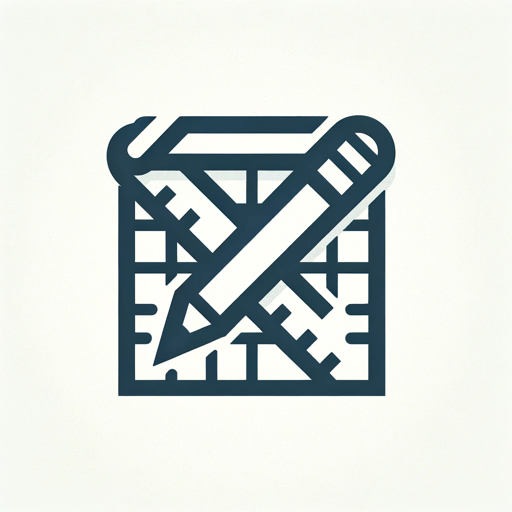DBT Architect-expert dbt project guidance
AI-powered dbt project assistant
What are key features of dbt for enterprise use?
How does dbt handle large data volumes efficiently?
Explain dbt's role in data governance?
Best practices for scaling dbt in large teams?
Related Tools
Load More
Software Architect GPT
Builds new software architecture documents by understanding user requirements and design constraints

Solution Architect
Formal, thorough, and friendly architect for solutions and ADRs.

DFD Assistant
Provides PlantUML code for Data Flow Diagrams.

Assistant Architect | LangChain Developer
Create AI-powered modules in Python and JavaScript

Technical Architect
Seasoned technical architect with experience designing complex enterprise systems.

Domain Driven Design Architect
Expert in DDD & Hexagonal Architecture, offering critical yet pragmatic insights.
20.0 / 5 (200 votes)
Introduction to DBT Architect
DBT Architect is a specialized version of ChatGPT designed to assist with the Data Build Tool (dbt), which is a popular open-source tool used to transform data in a data warehouse. The primary function of DBT Architect is to provide expert guidance on the use and implementation of dbt, tailored to different user skill levels and needs. It offers advice on best practices, project setup, advanced features, and troubleshooting. By using DBT Architect, users can optimize their data transformation workflows, ensuring data is reliable, maintainable, and scalable. For example, consider a data analyst who needs to create a series of data transformations for a reporting dashboard. DBT Architect can guide the analyst through setting up their dbt project, writing modular SQL models, configuring tests to ensure data quality, and deploying the project to a production environment. This guidance helps the analyst leverage dbt's capabilities effectively, leading to a more robust data pipeline.

Main Functions of DBT Architect
Project Setup
Example
Assisting users in setting up a new dbt project, including directory structure, configuration files, and connection to the data warehouse.
Scenario
A new user is starting with dbt and needs to set up their first project. DBT Architect provides step-by-step instructions on creating the necessary files and configurations, ensuring the project is correctly initialized and connected to the data warehouse.
Model Development
Example
Guiding users on writing SQL models, creating modular and reusable SQL code, and implementing dbt's Jinja templating features.
Scenario
An experienced data engineer is tasked with creating complex transformations. DBT Architect helps them write efficient SQL models, use macros for reusable code, and leverage Jinja for dynamic SQL generation, resulting in cleaner and more maintainable code.
Testing and Documentation
Example
Providing best practices for writing tests to ensure data quality and generating documentation for data models.
Scenario
A data team wants to ensure their transformations produce accurate results. DBT Architect advises on writing tests for key metrics and data quality checks, as well as creating comprehensive documentation for each model, making it easier for team members to understand and trust the data.
Ideal Users of DBT Architect
Data Analysts
Data analysts who are responsible for creating reports and dashboards can benefit from DBT Architect by learning how to transform raw data into clean, analysis-ready datasets. This service helps them understand dbt's capabilities and implement transformations that ensure data accuracy and reliability.
Data Engineers
Data engineers tasked with building and maintaining data pipelines can use DBT Architect to optimize their workflows. The detailed guidance on model development, testing, and deployment helps engineers create scalable and maintainable data transformation processes.
Business Intelligence Teams
Business intelligence teams that rely on high-quality data for decision-making can leverage DBT Architect to implement robust data quality checks and documentation practices. This ensures that the data feeding their BI tools is trustworthy and well-documented, facilitating better data-driven decisions.

How to Use DBT Architect
Visit aichatonline.org for a free trial without login, also no need for ChatGPT Plus.
Begin by accessing the official website and signing up for a free trial. No login or ChatGPT Plus subscription is required to get started.
Set up your dbt project
Install dbt and initialize a new project by following the setup guide provided on the website. Ensure you have Python and a database connection configured.
Configure your profiles.yml
Edit your profiles.yml file to define the database connection and project settings. This file ensures dbt can connect to your data warehouse.
Develop your models
Create SQL and YAML files to define your data models, transformations, and tests. Use dbt’s documentation and best practices to structure your models efficiently.
Run and test your project
Execute dbt commands to run your models, tests, and generate documentation. Regularly test and validate your transformations to ensure data integrity.
Try other advanced and practical GPTs
ArchiMate Architect
AI-powered enterprise architecture modeling.

Professor de Fisica e Matematica
AI-powered assistance for educators

Prompt's Perfect
AI-Powered Prompts Tailored for Your Needs

Perfect Pools
AI-powered pool care for everyone

Perfect Nails
Your AI-powered nail care expert.

Professor Robot
AI-Powered Assistance for Robotics and Beyond

怖い画像生成
Generate terrifying visuals with AI.

ナリキリチャット AI彼女 みなみちゃん
Your AI-Powered Virtual Girlfriend

Pronostics foot France
AI-powered football insights and forecasts.

Parions Foot ⚽️ "Spécial Combinés"
AI-powered football betting strategies.

Voiceflow Chat Bot Creator Assistant
AI-Powered Chatbots for Seamless Customer Interaction

TOK Exhibition and Essay Mentor
AI-powered TOK Guidance

- Troubleshooting
- Workflow Optimization
- Project Setup
- Data Modeling
- Advanced Features
DBT Architect Q&A
What is DBT Architect?
DBT Architect is an AI-powered tool designed to assist with the development, deployment, and management of dbt projects, providing expert guidance and best practices.
How does DBT Architect enhance my dbt workflow?
DBT Architect offers step-by-step guidance, optimization tips, and troubleshooting advice to streamline your dbt workflow and ensure efficient project management.
Can DBT Architect help with setting up a new dbt project?
Yes, DBT Architect provides detailed instructions and best practices for setting up a new dbt project, including environment configuration and project initialization.
Does DBT Architect support advanced dbt features?
Absolutely, DBT Architect covers advanced dbt features such as incremental models, custom tests, and macros, helping you leverage the full potential of dbt.
Is there a community or support for DBT Architect users?
Yes, DBT Architect offers access to a community of users and experts, along with comprehensive documentation and support resources to assist with any queries or issues.